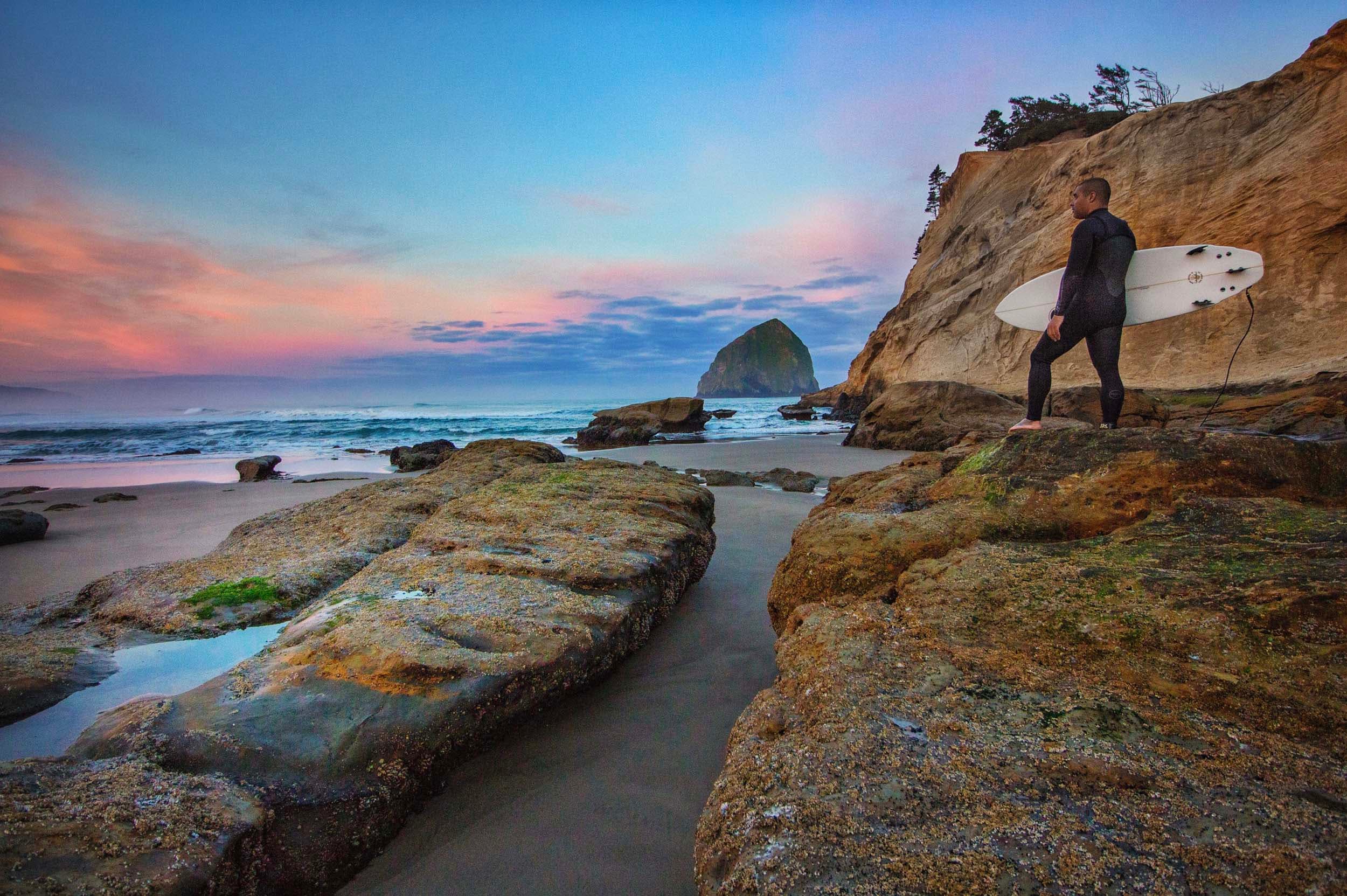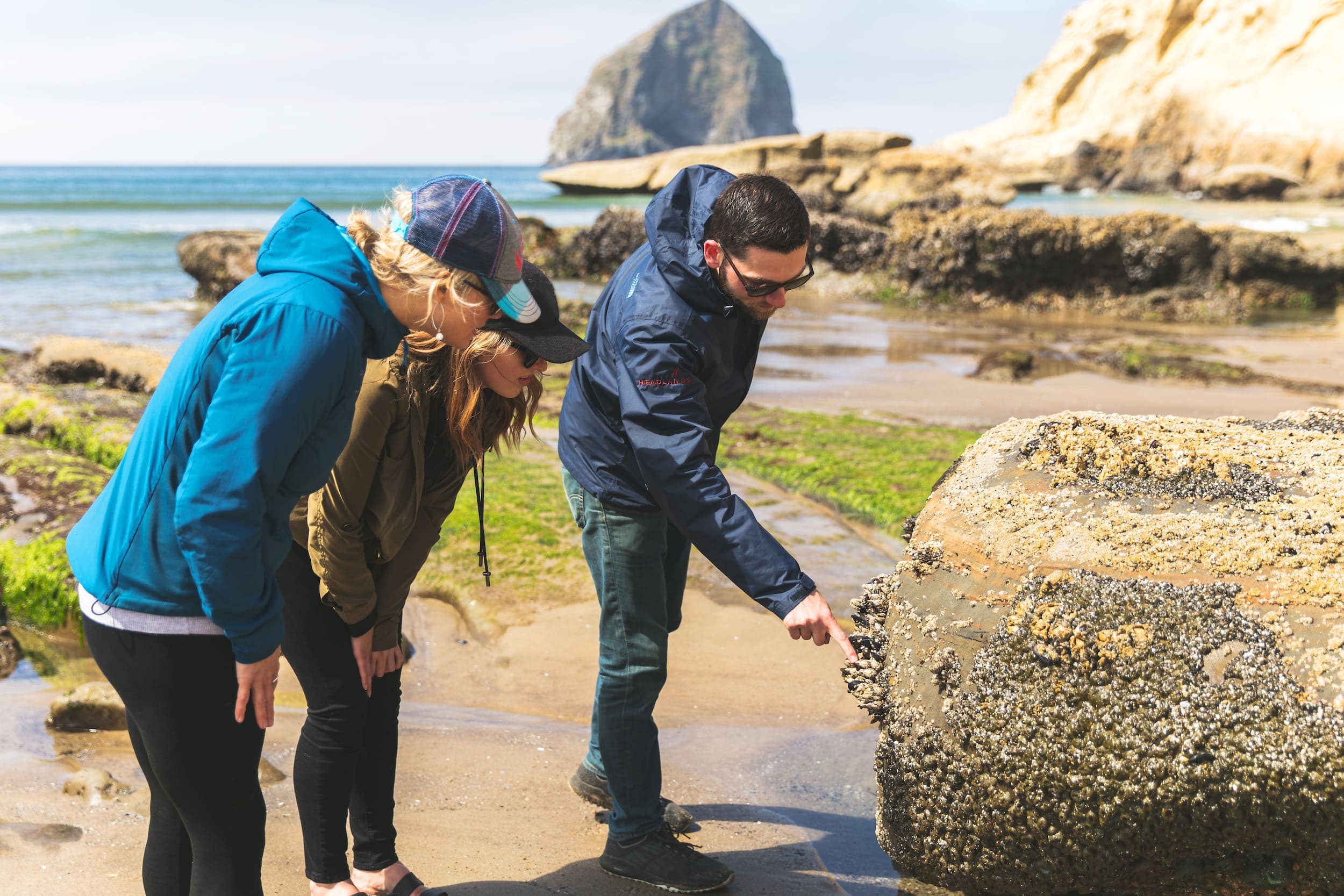

Discover The Tide Pools At Cape Kiwanda
May 2021
Your Perfect Tide Pools Exploration
The tide pools at the base of Cape Kiwanda host a myriad of fascinating marine life that await your discovery. Whether you head out on your own self-guided tour, reserve a private excursion, or join a small group outing, be sure not to miss this fun and illuminating coastal experience during your stay at Headlands Coastal Lodge & Spa.


Here Are Several Ways To Visit The Tide Pools:
Venture to the beach for a self-guided tide pools exploration. Be sure to stop by the Adventure Center to learn about ideal times to visit! While there, pick up a guidebook and tide pools identification cards to help you make the most of your outing.
During the summer months the daily low tides recede even further, making way for occasional minus tides. Reserve your summer stay to coincide with a Tide Pool Discovery outing and join our Adventure Coaches for an informative group tour with maximum tide pool viewing opportunities.
For a special in-depth experience, reserve a private Tide Pool Exploration tour with our Adventure Coach and resident tide pool expert, Taylor.
No matter how you chose to discover the tide pools, be sure to practice good stewardship; do not touch the creatures, watch your step, and don’t forget to take along a Barrel Bag to collect garbage and earn a free Pelican beer upon return to the lodge! Learn more about tide pooling adventures here.



Before heading out, acquaint yourself with some of the fascinating creatures who join us in calling the North Coast their home.
A Few Of Our Favorite Tide Pool Residents Are:
Giant Green Anemone – Anemone belong to a group called cnidarians, named for the stinging cells that are used to inject venom into fish and other prey. Giant Green Anemones get their color from natural pigment as well as from a symbiotic relationship with microplankton that grows in its tissue. At Cape Kiwanda, these large anemones are found in shallow, sandy, pools.
Aggregate Anemone – These smaller anemones create clones of themselves that spread across rocky surfaces but will not combine with genetically different aggregates. The result is a reticulated pattern of genetically individual clusters, each composed of countless individuals. At low tide aggregate anemone close tight to protect themselves from drying out and are seen on the tops and sides of rocky formations.
Ochre Sea Stars – This keystone species helps assess the overall health of the tide pools where they feed on mussels by prying open the shells, then expelling their stomachs from their mouth sand dissolving the mussel to absorb its nutrients. Scientists do not know why some of these large sea stars are orange and others are purple, but we know you will find them in shady crevices of the intertidal rocks where they shelter from the sun.


Crab – Shore crab are masters at camouflage so look carefully and stay still to notice the pinchers moving along. Large Dungeness crab, Oregon’s official crustacean, can sometimes be found at the shoreline.
Purple Sea Urchin – These tropical looking creatures look out of place in the cold waters of the Oregon coast, but you will find them in deeper pools at Cape Kiwanda– often nestled into pockets in the rocks. Like sea stars, urchins are in a group of sea animals called echinoderms – named for their spiny skin. The spines of the Purple Sea Urchin, which are used for protection and to spear prey, start out green and mature to the distinctive purple with age.
California Mussel – These large mussels abound on the basalt fixtures in the intertidal zone and are often found hosting barnacles attached to their outer shell. Ochre Sea Stars are often found nearby.
Tidepool Sculpin – This small, sand-colored fish can be difficult to spot at first. Be patient and still beside shallow pools and these charming fish will reveal themselves. Camouflage is not its only defense, marine biologists have learned that Tidepool Sculpin can smell the predatory fish, the Kelp Greenling.
See you at the tide pools!